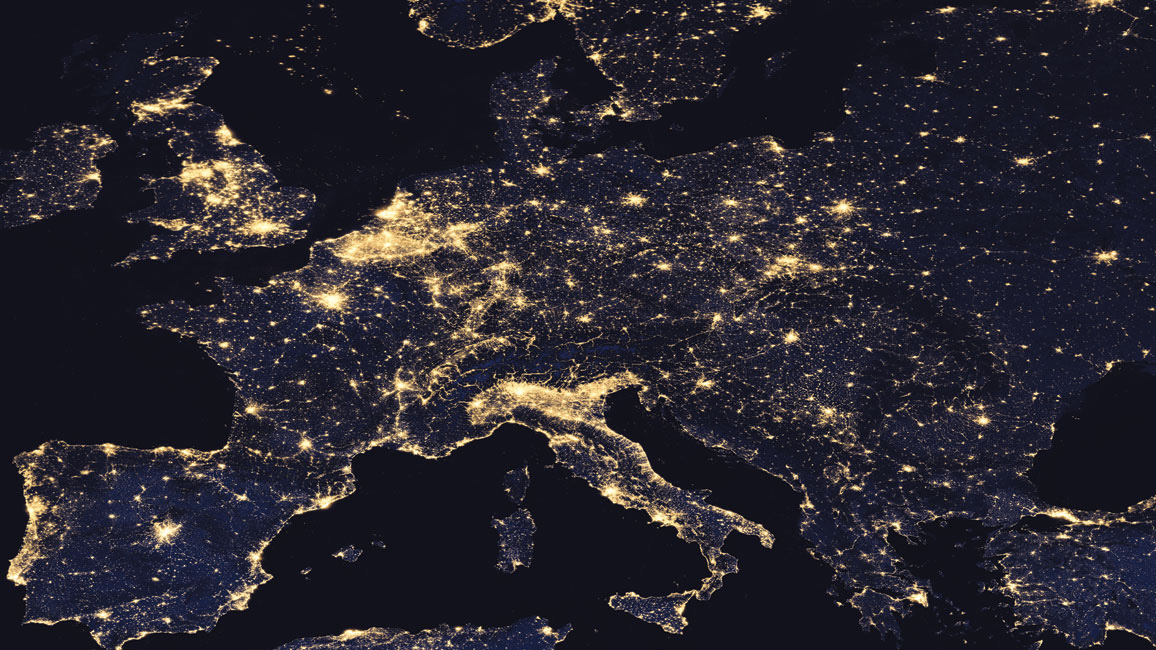
This Article From Issue
March-April 2020
Volume 108, Number 2
Page 120
GROWTH: From Microorganisms to Megacities. Vaclav Smil. 664 pp. The MIT Press, 2019. $39.95.
It is hard to imagine a more ambitious topic for a single book than the phenomenon of growth, particularly when it is applied to such a wide range of systems as single-celled organisms, more complex forms of life, crops, domesticated animals, and humans. But Growth: From Microorganisms to Megacities does not stop there: It examines the vast array of human-made artifacts, including tools, structures, modes of transport, housing, infrastructures, and electronics. Energy systems are also included. Perhaps the most fascinating analysis of growth concerns human beings beyond our lives as individual organisms—human populations, megacities and conurbations, housing, digital technologies, economies, and civilizations.
Before delving into this extraordinary range of topics, Growth begins with a mathematical warm-up, a necessary dive into the tools of analysis required to understand the fundamentals of growth. Eminent energy scholar Vaclav Smil leads the reader through a range of possible trajectories that the growth of any entity can take through time. Not surprisingly, simple linear trajectories are uncommon. Far more prominent is the logistic curve, the trajectory of growth that takes the shape of an S-curve: a slow beginning, an intermediate period of rapid growth, and then a leveling off toward a stable state that is often controlled by the intrinsic limits of the entity undergoing growth.
Among the encyclopedic number of facts in this hefty book emerge some astute and penetrating assessments and syntheses. One of the most innovative of these is chapter 4, “Artifacts: or growth of man-made objects and their performances,” which is a tour de force of the monumental variety of things that humans have made. Smil opens the chapter by analogizing the number and types of human-made objects to the total of all living species (biological diversity). His remarkable conclusion is that our own artifacts—“species”—are probably far greater in number than the variety of organisms on the planet. That is, we have made an enormous amount of stuff.
The careful analyses of growth patterns of various types lead to debunking some rather widespread and influential beliefs. For example, the amazing speed and penetration of the digital revolution, as exemplified by Moore’s Law, is often held up as the underpinning of a much more sustainable global society. That notion meets with a more sobering analysis in this book. Smil refers to “Moore’s Curse” and cautions that the incredible pace of technological change triggered by the digital revolution has led to unrealistic beliefs in, and expectations of, dematerialization. To the contrary, the digital revolution has seen a steep increase in the consumption of materials, as shown by the sharp rise in the global production of steel and cement. Other negative consequences of the massive information flows of the digital world include “increased loss of privacy, threats of hacking and information theft, new means for covert criminal activities, as well as an enormous waste of valuable, highly energy-intensive, and often environmentally damaging materials.”

Photo by Vaclav Smil.
One of the most popular cases of rapid growth followed by stagnation and sometimes collapse is the rise and fall of civilizations, as often exemplified by the Roman and Mayan empires. Smil analyzes the trajectories of several past civilizations, showing that the rapid growth phase inevitably ends, sometimes with a gentle decline and sometimes with a more sudden and disruptive collapse. What about our current, technologically advanced, rapidly globalizing civilization? Smil notes two advances that stand out: an increase in destructive power (5 to 11 orders of magnitude) and an immense increase in access to stored information (the digital revolution). The store of information accessible to people will soon be a trillion times larger than it was just two millennia ago. But Smil also notes that the cost of these advances is enormous: acceleration of assaults on the biosphere, destabilization of the climate system, and growth of inequalities in societies.
The store of information accessible to people will soon be a trillion times larger than it was just two millennia ago. But the cost of these advances is enormous.
Among all these observations, mathematical analyses, and applications of logistic curves, Smil occasionally detours from his strictly analytical and objective approach to throw in a few well-founded value judgements. For example, he describes as “detestable” the extraordinarily confined conditions in which millions of broiler chickens live their short, brutal lives as part of a mass production system. They are given no consideration as living beings. In describing the rapid growth phase in the size of human dwellings, he cannot resist taking a swipe at McMansions, describing them as often being “poorly built, odd looking, and esthetically offensive.”
After the long, detailed analysis of the phenomenon of growth in its myriad forms comes Smil’s final and most powerful chapter, “What Comes After Growth: or demise and continuity.” Here he takes aim, on the basis of the data and analyses in the preceding chapters, against contemporary society’s “worship of eternal growth,” words conveying that neoliberal economics has now become a religion while trying to retain the trappings of a science (which it is not). Smil’s exposure of the fundamental flaws of neoliberal economics is devastating. For example, he notes that decoupling economic growth from energy and material inputs contradicts fundamental physical laws, despite some increases in efficiencies of use:
Most economists are either unaware or dismissive of the advances that took place in our understanding of the synergistic functioning of civilization and the biosphere—and yet they maintain a monopoly on supplying their physically impossible narratives of continuing growth that guide decisions made by national governments and companies.
The clash between ongoing economic growth and biosphere integrity, eloquently analyzed in theory throughout Growth, is now becoming a frightening real-life inevitability. I am writing this review in Canberra, Australia, on the final day of 2019. Tomorrow the 2020s will begin. This morning I walked my dog at 6 AM to avoid the extreme heat and wore a face mask to avoid inhaling dangerous levels of smoke from massive bushfires raging east of Canberra. Over the past few months, more than 5 million hectares of eastern Australian forests have burned. By comparison, the area of England is about 13 million hectares. Firefighters’ exceptional skill and bravery have minimized the loss of human life and damage to property. But the toll on the biosphere is enormous. About 500 million mammals, birds, and reptiles have already died, including thousands of the iconic koalas (see page 80). Some humans close to the fires are being treated for severe mental stress from hearing the horrible screams of animals as they burned.

NASA Earth Observatory/Robert Simmon
The unfolding horror of the fires in eastern Australia, which have been far more intense and widespread than Australia’s fire-adapted landscapes have experienced in the past, comes only a few years after two consecutive mass coral bleaching events killed 50 percent of the Great Barrier Reef. Yet Australia’s prime minister took a vacation during the fire crisis. His government, together with state governments, continues to approve and support more coal mines and a massive expansion of the gas industry, even as the most populous part of the country burns and the reef dies. Economic growth rules.
Australia at the start of 2020 is a striking example of what Smil’s final comments eloquently convey: that “past (and ongoing) practices—pursuit of the highest possible economic growth rates, extending the culture of excessive consumption to additional billions of people, and treating the biosphere as a mere assembly of goods and services to be exploited (and used as a dumping ground) with impunity—must change in radical ways.”
Of course, such warnings have been made repeatedly and loudly by a wide range of groups. But the one issued by Smil’s book stands on an authoritative base of indisputable facts and impeccable analyses. Will its warning finally exorcise humanity’s growth fetish?
American Scientist Comments and Discussion
To discuss our articles or comment on them, please share them and tag American Scientist on social media platforms. Here are links to our profiles on Twitter, Facebook, and LinkedIn.
If we re-share your post, we will moderate comments/discussion following our comments policy.